Find out what owners think about their new trains before you buy, and tell others what you think.
General Topics Discussion Board.
A place to ask questions and give advice about Toy Trains. Open to anyone who wants to post a message.
|
Find out what owners think about their new trains before you buy, and tell others what you think. |
General Topics Discussion Board. A place to ask questions and give advice about Toy Trains. Open to anyone who wants to post a message. |
|||
An Odd Ives 3252 Engine.
The engine is a 3252. Dark Olive Green with two brass plates on the side. But underneath the dark olive paint- like a Lionel 33- it's rubber stamped 3250 on the ends and sides under the ventilators. It looks like it could have been a brighter green paint- similar to a Lionel 152. It's also rubberstamped under the brass plates "The Ives Railway Lines" and "3250 NYC&HR." You can see the rubberstamped lettering under the paint and where it sticks out from under the sides of the plates. There is no paint on the handrails or anywhere it shouldn't be. The plates are worn around the edges- it's not paint but tarnish. The windows look like they had red paint on them, but it has crystalized and fallen off.Here's some pictures of the engine:
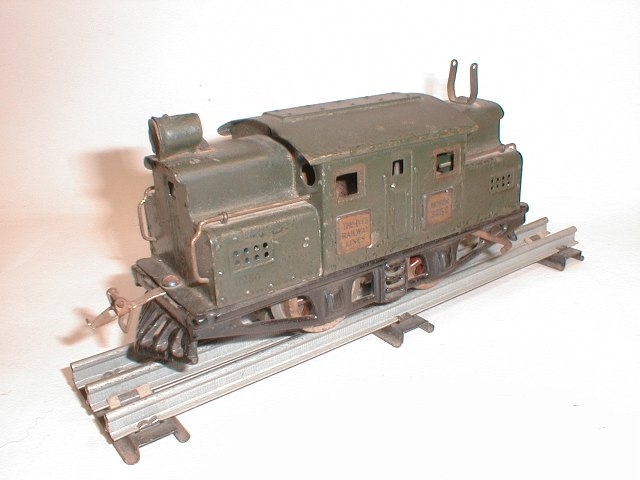
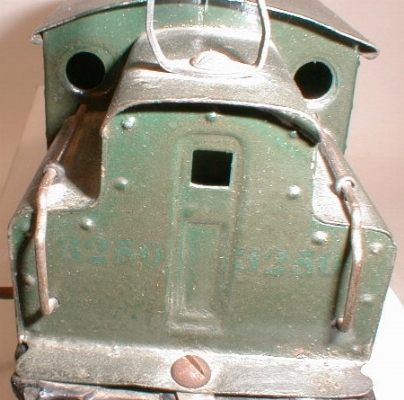
Here's the end showing the 3250 under the paint.
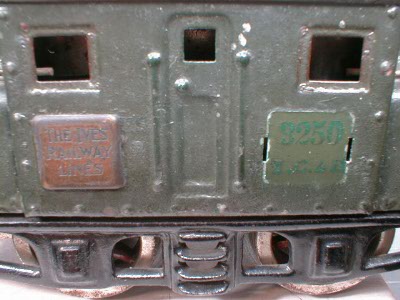
Here's the side with a plate removed to show the 3250 and NYC&HR stamping under the plate area. Note that there is no impressed rectangular area like the salmon 3250 shown below. This fact and the NYC&HR lettering date the engine to before 1925.
Dave McEntarfer sent me some information about this engine. Here are his comments:
Dave is the President of the Ives Train Society, and runs a website devoted to Ives Trains. The Society's website has lots of pictures of Ives Trains (Kind of like what I'm doing my encyclopedia, but I only have two pictures of Ives trains, and they have hundreds- Here's a link to the Ives Train Society's Website.
Dave sent me two pictures to illustrate his comments.
The first picture is of a Salmon 3250 from 1925. Notice that it has square recessed indentations around the lettering.
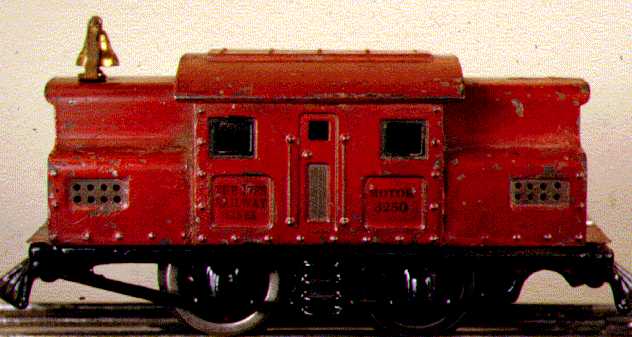
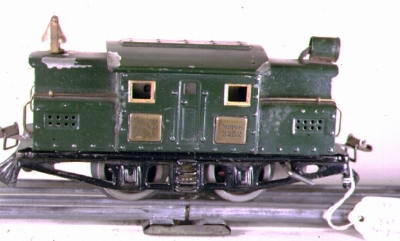
Thanks again,
Terry Gibbs
05/22/2000.
If you have any comments about this engine, please drop me an email by Clicking Here.
Follow this link to the Train99.com Home Page
ã
2000 by Terry Gibbs. All rights reserved.